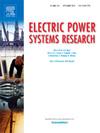Application of electromagnetic field expressions of accelerating charges to obtain electromagnetic fields of engineering return stroke models
IF 3.3
3区 工程技术
Q2 ENGINEERING, ELECTRICAL & ELECTRONIC
引用次数: 0
Abstract
There are several approaches to describe the generation of return stroke current in lightning flashes, collectively referred to as return stroke models. Among these, engineering return stroke models are widely used to compute the electromagnetic fields generated by return strokes. These models are typically categorized into three types: current propagation, current generation, and current dissipation models. Each model type can be employed to describe the spatial and temporal variations of the return stroke current. Once these variations are defined, multiple methods are available to calculate the resulting electromagnetic fields, all of which yield equivalent results. One such method involves using electromagnetic field expressions for moving and accelerating charges. This paper illustrates the procedure for calculating the electromagnetic fields of return strokes using this approach. The procedure is demonstrated for all three categories of return stroke models: current propagation, current generation, and current dissipation.
求助全文
约1分钟内获得全文
求助全文
来源期刊

Electric Power Systems Research
工程技术-工程:电子与电气
CiteScore
7.50
自引率
17.90%
发文量
963
审稿时长
3.8 months
期刊介绍:
Electric Power Systems Research is an international medium for the publication of original papers concerned with the generation, transmission, distribution and utilization of electrical energy. The journal aims at presenting important results of work in this field, whether in the form of applied research, development of new procedures or components, orginal application of existing knowledge or new designapproaches. The scope of Electric Power Systems Research is broad, encompassing all aspects of electric power systems. The following list of topics is not intended to be exhaustive, but rather to indicate topics that fall within the journal purview.
• Generation techniques ranging from advances in conventional electromechanical methods, through nuclear power generation, to renewable energy generation.
• Transmission, spanning the broad area from UHV (ac and dc) to network operation and protection, line routing and design.
• Substation work: equipment design, protection and control systems.
• Distribution techniques, equipment development, and smart grids.
• The utilization area from energy efficiency to distributed load levelling techniques.
• Systems studies including control techniques, planning, optimization methods, stability, security assessment and insulation coordination.
 求助内容:
求助内容: 应助结果提醒方式:
应助结果提醒方式:


